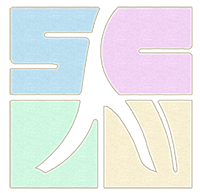
The papers in this issue are collected from those presented and discussed at the International Conference “Overseas Portraiture of Modern Chinese Lives: Life Writing and Its Current Trends.” All the papers here have been revised according to the suggestions of our experts afterwards. Due to the journal’s limitation of space, other papers from this conference will be published in the next issue .
This conference has been covered in detail by Quan Zhan in this volume. As an American scholar comments, this conference features intellectual quality and variety in the papers. That is reflected in this issue.
Comparative biography is a new topic deserving the attention of the academia. This issue includes three papers, from China, the US and the UK respectively. Ross Terrill gained prominence for his well-acclaimed Mao: A Biography. His paper “Foreign Biographies of Mao: Evolution over Eight Decades and the Reasons for Changes” is a comparative study on a number of influential overseas biographies of Mao Zedong. It is important from either the life-writing perspective or that of the cultural history. Ralph Parfect conducts a comparison of two biographies and one novel by Lin Shuhua in his “Who’s Afraid of Lin Shuhua?” and discovers that the three writers share feminism and transnationalism in common despite their differences in the contexts of production, in the standpoint or in the interpretations of Lin Shuhua. Yang Zhengrun’s “Comparative Biography: History and Patterns” explores more than 2,000 years of comparative life writing history, examining its first appearance, stagnation and revitalization. Through the analysis of the major patterns and representative works of the comparative biography published across the world up till now, this paper is the first systematic discussion of comparative biography. The aforementioned three papers highlight, with detailed case studies against the backdrop of grand cultural vision, or, with the historical survey based on textual analyses, the academic significance and the promising prospect of comparative biography.
With regard to the theme of this conference, many other papers contain the elements of the comparative life writing. Wong Sin Kiong collects voluminous biographical materials about Wu Liande in his “A Comparative Study of Life Writings on Wu Liande.” He compiles, verifies and analyzes those materials, comparing biographies and autobiographies of Wu Liande produced in different contexts or languages. In his analysis of Wu Mi’s diary, Liang Qingbiao’s “The Awkwardness of Wu Mi’s Self Portrayal as a ‘Moralist’” reveals, in the comparison of Wu Mi with Rousseau, author of The Confessions, that Wu’s criticism of Rousseau is tinged with misinterpretation and prejudice, with a great contradiction of his romantic temperament and moralist identity in his personality.
Diaries by eminent people in China’s early twentieth century are made available to the public in recent years , including Wu Mi’s Diary. This arouse great attraction to readers, a fact that increases importance to life-writing studies. Owing to the nature of private writing, however, diary needs experts’ research and interpretation to reveal the value and essence. Wang Hongyue’s “The Characteristics and Biographical Value in Secrets in Chiang Kai-shek’s Diaries” is an explicating comment on Chiang’s diaries as well as a revision and supplement to the existing interpretations. It is true that long diaries by historical figures require joint efforts from a great number of researchers to maximize the entire value.
Philip Lejeune’s The Autobiographical Pact contains the theories familiar to numerous autobiography researchers among the international academia. Françoise Simonet-Tenant, Lejeune’s colleague and assistant, argues in his “Autobiography: A French Ardor” that issues of autobiography and autobiographical pact are being debated heatedly with the emergence of new concepts and theories. Also, Lejeune’s opinions changed to some extent in time. The sufficient information and our French counterparts’ ardor for biographical theories are inspiring us.
Many papers in this issue are unique as they are. Tsun-Jen Cheng’s “Biography of Disabled People in Taiwan” explores lives of the disabled in Taiwan. He expounds theories for lives of the disabled in the previous issue of the journal. Life writing take humanism as its fundamental spine, which means such group of people and their lives deserve special attention by the life writing community. Life writers often meet with the problem of insufficient historical materials in their writing. It has been a perennial discussion in the life writing community whether fiction is allowed in life writing and, if any, what kind is allowed. Li Kaiyuan compares the ancient accounts and that of his own in filling the historical gap in Mr. Hou’s Narrative of Xiang Yu. Li’s amusing and vivid narration is well buttressed theoretically by Aristotle’s Poetics.
Also in this issue, three life writers share their writing experiences. Ying-ying Chang selected her daughter, Iris Chang (author of The Rape of Nanking, once renowned in Europe and the US) as her subject. Paul Y. Shao wrote a biography of Confucius, the ancient sage 2,500 years ago. Peggy and Murray Schwartz jointly celebrated the life of Pearl Primus, the African American modern dancer and anthropologist. The three lives bear wide discrepancies in regard to the identity of the subject and the biographer and the relationship between the two. Each practitioner prosses his/her own own concepts, methods and experience in life writing. The echoes in our mind: the great investment poured into their writings, including time, energy and sentiment.
SJTU Center for Life-Writing is now developing “the Multilingual Full-Text Database of Overseas Life-writing on Modern Chinese People.” Liu Jialin from SCLW provides a comprehensive introduction to the objective, plan, progress and prospect of the database with his paper. Inspiring as the paper is, we hope readers will be interested in this database and welcome your suggestions and advice.